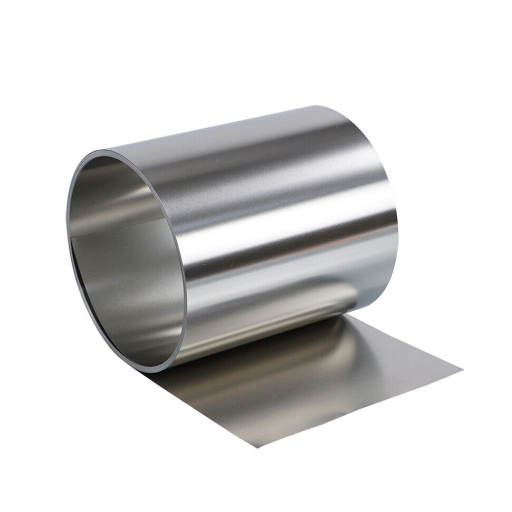Understanding the magnetism of materials has been of interest to scientists and engineers for a long time and has driven progress in many fields, such as electronics and material science. All elements do not exhibit magnetism uniformly. Dense and versatile metal Lead poses some intriguing questions concerning its magnetic characteristics. Can Lead, usually considered diamagnetic material, become magnetized at some point? This article intends to address the basic properties of Lead, how it interacts with magnets, and the laws of science behind that interaction. This post will help you appreciate the importance of Lead’s magnetic properties—or lack of them—in different fields of science and industry, as well as the implications for materials science.
What Are the Magnetic Properties of Lead?

Lead ranks as diamagnetic material. This means it does not naturally have a pull toward magnetic fields, and indeed, it generates a weak opposing magnetic field when subjected to one. This behavior stems chiefly from the lack of unpaired electrons within lead’s atomic framework, effectively resulting in no net magnetic moment. Although lead will not display ferromagnetism or paramagnetism in the usual sense, he is able to respond weakly to a magnetic field under certain conditions, like extremely strong magnetism. Still, these interactions are weak and have little use.
Understanding Lead’s Magnetic Moments
The reason behind lead’s magnetic characteristics lie primarily in quantum mechanics and its atomic constituents. Lead (Pb) possesses an electronic structure consisting of a filled outer shell and having its 6p orbital fully populated with electrons. Such a configuration minimizes unpaired electrons, thus mitigating intrinsic magnetic dipole moments. As a result, lead is a weak diamagnetic, repelling magnetic fields instead of aligning with them, as would ferment or even paramagnetic materials do.
Lead’s diamagnetic susceptibility has been experimentally calculated at about -1.8 × 10⁻⁷ emu/mol, placing it among materials with practically no magnetic response. Nonetheless, under some extreme conditions, for instance, the application of strong magnetic fields, or at cryogenic temperatures, small quantum-level effects can be discerned. These conditions occasionally reveal minor changes in electron configuration that, while still feeble, aid in understanding the delicate balance between the atomic structure of lead and the magnetic forces acting upon it. Advanced understanding of these behaviors is crucial for development in areas such as material science and quantum computing, which require meticulous control of atomic and electronic features.
Is Lead a Diamagnetic Material?
Leads’s electronic structure grants it the status of being classified as a diamagnetic material. Substances where all electrons are paired possess no net magnetic dipole moment. Leads’s electronic structure grants it the status of being classified as a diamagnetic material. When put under a lead, it sweatpants off a very weak opposing magnetic field, something that is characteristic of being diamagnetic. This effect happens is due to the induction of the external field; the external field is repulsive.
To quantify the magnetic susceptibility of lead, one finds that it does possess a negative value, being roughly equal to -1.8 x 10^-5 (in SI Units). This means that lead responds weakly to gravimetric changes in motion, hence displaying weak diamagnetic tendencies. Alone, lead is not a capable material of sustaining strong technologic applications, however, its easy measurable magnetic properties do serve take advantage of some. The intrinsic softness of lead, when alloyed or complex system, enables the combination of its sustainable superconducting diamagnetism to act as shielding mateer buffers.
How Can You Magnetize Lead?

Due to its diamagnetic traits, lead does not have the ability to become magnetized as it repels magnetic fields. However, magnetically it can be influenced when combined with other materials. For instance, in the alloys of superconducting elements containing lead, lead can become a superconductor and can expel magnetic fields below a certain temperature (the Meissner effect). Outside these specialized conditions, lead can not be magnetized like ferromagnet- iron, or nickel can.
Methods for Magnetization
As a material acquires magnetic properties through the alignment of atomic dipoles within an externally applied magnetic field, it undergoes the process of magnetization. Each method used for magnetization has its distinct advantages as well as drawbacks:
- Exposure to a Magnetic Field
This is one of the more popular techniques used in magnetizing ferromagnetic materials. Strong external magnetic fields are used to place the material and as a result, the magnetic domains within the material align with the field. This aligning process induces a magnetic moment. Both the strength of the applied field and the duration of exposure impact the degree of magnetization.
- Electrical Current (Electromagnetism)
- Mechanical Stress and Magnetoelastic Coupling
Inducing mechanical stress like tension or pressure on magnetostrictive substances can modify the magnetic domains because of the magnetoelastic effect. This area of controlled magnetism is of great interest for modern engineering as it can be applied to sensors and actuators. External mechanical forces enable control over the magnetic response.
- Thermal Treatment (Annealing)
Heating a ferromagnetic material above its Curie temperature removes any residual magnetization and randomizes its domains. When cooled slowly while a magnetic field is applied, the domain’s reorientation and a magnetized state are achieved. This technique is important in the production of permanent magnets.
We already discussed how tailored each technique is to the specific material type and application. That said, there have been great advances in the industrial design of magnets, innovations in data storage, and even in medical imaging technologies. Selection of technique is based not only on the nature of the material, but also on the expected field strength, energy efficiency, and environmental conditions of use.
Conditions Required to Induce Magnetism
The induction of magnetism in materials is a complex process requiring a specific combination of conditions to be met. The atomic structure of a material must be conducive to support domain formation, which is, in most cases, only possible with ferromagnetic materials (iron, cobalt, nickel). These domains respond to external magnetic forces by aligning and producing an integrated magnetic effect. This alignment, however, has to be maintained and initiated by an adequately strong external magnetic field, which is required to hold the material together. Additionally, temperature is another critical factor that must be below the material’s Curie temperature. If the temperature exceeds this limit, the alignment of domains would be disrupted leading to a loss in magnetism.
Furthermore, impurities, density, and crystalline structure can also affect the speed and efficiency of magnetization processes. For precision purposes, processes that require higher magnetization rates, like those used in robotic surgery, are accelerated in vacuum or low interference settings. These factors need to be considered for a range of medical equipment and advanced electronic systems, which rely on precise diagnostic tools.
Limitations in Magnetizing Lead
Lead is a heavy metal that is low melting point and high density – this alloy poses significant limitations when it comes to magnetization. The electronic structure of lead is one of the greater concerns; it has a closed-shell configuration with no unpaired electrons, for which generating a net magnetic moment is impossible. Because of this, lead is diamagnetic and cannot be magnetized, only producing a weak repulsive response to external magnetic fields. There is a high atomic weight, which reduces the mobility of electrons, making lead incapable of magnetic ordering. There are no strong or permanent magnetism features; whether or not these alloys are lead composites, these materials will be unsuitable for such applications. Still, specialized functionalities may still be possible to engineer to new composites where the primary components are lead alloys.
Why Is Lead Considered Non-Magnetic?

Lead does not have unpaired electrons in its atomic structure; therefore, it is labeled as non-magnetic. Moreover, the diamagnetic nature of lead causes it to resist external magnetizing forces rather than magnetizing to them. The combination of these properties makes lead ineffective for use in anything magnetic.
The Role of Electron Configuration
As discussed above, an electron’s arrangement in terms of its orbitals is vital for determining the magnetic properties of an element. An example would be unpaired electrons residing in the outer shell of an atom that can give rise to a magnetic dipole moment which leads to the material’s magnetization. Certain elements possess a high degree of magnetism like iron and cobalt and greater unpaired electrons due to parts in their d or f orbitals being occupied. On the other side, lead does not have a magnetic moment because its electron configuration is fully filled and so there are no unpaired electrons to magnetize and thus exhibit magnetism. These principles regarding the arrangement of electrons give rise to differentiating materials into diamagnetic, paramagnetic, and ferromagnetic which further categorizes them according to their use in materials for machines that operate with applied magnetism and engineered materials for scientific applications.
Analyzing Lead’s Magnetic Susceptibility
Recent studies focused on lead’s near constant temperature dependence of the diamagnetic behavior as its electronic structure does not change over the range of temperatures considered normal for experiments. This along with the low permeability of magnet lead is relatively useful when shielding materials are needed that must not be interfered with by magnetic fields. Such findings emphasize the importance of measuring material quantities accurately to improve the performance of sophisticated systems technologies.
What Are the Applications of Lead’s Magnetic Properties?

The distinct lead magnetic properties such as its low magnetic permeability and diamagnetic behavior make it an important component in several shielding functions. One major application is the shielding of sensitive electronic equipment from external magnetic interference. Also, lead has been used in experimental physics, where precision measuring instruments need to be isolated from the fields, so they do not distort the measurements. His primary contribution in these instances stems from his ability to repel and reduce magnetic flux.
Use in Magnetic Fields
Lead is excellent for magnetic field shielding thanks to its high density, and its effectiveness can be further enhanced by using mu-metal alloys or superconductors. These combinations widen its possibilities, especially in places where strong field attenuation is needed. Mu-metal, a magnetic alloy of high permeability, is often coupled with layers of lead to improve the magnetic field suppression bandwidth. Superconducting materials are perfect for advanced shielding because when cooled below critical temperatures, they completely expel magnetic flux (Meissner effect) making them ideal for quantum computing or cryogenic systems. These developments are examples of the increasing efforts aimed at the isolation of magnetic fields for scientific, industrial, and medical devices.
Impact on Alloys and Materials
The development of isolation technologies of magnetic fields has also advanced the processes of development and refinement of alloys and composite materials. High-permeability alloys such as mu-metal are widely used in shielding applications because they permit low coercivity and high magnetic permeability. More recent developments are the newly introduced nanocrystalline alloys with improved magnetic properties at lesser thicknesses, therefore making the shields lighter and more efficient. Also, the incorporation of neodymium and other rare-earth elements into the alloys has improved the magnetic performance of these materials in high-static fields. These materials are now required in medical imaging used for diagnosis where precise magnetic field constraints are mandatory and in scientific research to improve the performance of spectrometers, particle accelerators and other devices. Work aimed at changes in microstructure of material continues to provide better, simpler, more reliable, and specialized shields.
How Does Lead Compare to Ferromagnetic Materials?

Ferrous magnetic materials and lead have distinct differences when it comes to their protection applications. because of its high density and atomic number, lead is extremely useful in halting radiological materials such as x-rays and gamma rays. but it does not interact with magnetic forces, so it has no use in shielding magnetic fields.
Ferromagnetic materials excel in supporting against magnetic fields due to their capacity to redirect magnetic flux. Iron and some steel alloys, which fall into these categories, are known to have high magnetic permeability which enable them to absorb and redirect magnetic energy. Ferromagnetic materials can not be used for radiation shielding, unlike lead, but are a must-have for anything that requires containment or control of magnetic fields.
As we may conclude, choosing between lead and ferromagnetic materials differs depending on the specific requirements of radiation and magnetic field management.
Differences in Magnetism
Magnetism explains the movement electric currents create as it occurs most in materials with unpaired electrons and certain configurations of atoms. Each of the types of materials have differing levels of magnetism based on the arrangement of their electrons in the atoms and the magnetic characteristics of the atoms themselves. Iron, cobalt, and nickel are examples of ferromagnetic materials with strong magnetism because the unpaired electrons in domains are net magnetically parallel. twofer magnetics, the electrons work individually and are weakly attracted to an external magnetic force, and thus only feebly ferromagnetism. Some materials, such as copper and bismuth, can slightly repel magnetic fields due to having no net magnetic moment and negatively paired electrons.
Also, ichweg’s work for magnetism is done by ferromagnetic materials which the power of magnets avoid shape has and new tech stuff is done. Through imaging devices and automatic beyond-during devices, it is possible to capture and endlessly image complex and microscopic structures.
Lead vs. Nickel and Cobalt
Lead is known to be a diamagnetic material because it does not possess unpaired electrons in its atomic structure and hence has weak magnetic susceptibility. This behavior is in sharp contrast with ferromagnetic materials like nickel and cobalt. Nickel and cobalt do possess unpaired electrons in the d-orbitals which allow strong magnetic dipole interactions to take place as well as involving cooperative alignment when subjected to an external magnetic field. The Curie temperatures for these metals which are 358 °C for nickel and 1,115 °C for cobalt also signify their strong magnetic properties relative to lead which does not have a transition point.
In terms of technology and industry, both nickel and cobalt are crucial components in the development of high-performing magnets, electrodes for batteries, and huge data systems that need strong and dependable magnetic features. On the other hand, the most important characteristic of lead is its high density and resistance to corrosion which makes it highly useful in radiation shielding and construction materials as well as for magnet-related applications. Learning these fundamental properties of materials makes it possible to create new innovations in energy systems, advance electronics, and sophisticated manufacturing at the atomic level.
Can Lead Be Used in Magnetic Applications?

Lead is incapable of serving magnetic functions because of its diamagnetic properties. Lead, as a diamagnetic substance, feebly repulses magnetic fields and does not have the capacity to retain magnetization after external magnetic fields are removed. This quality renders lead ineffective for practical use in devices that necessitate robust or stable magnetic forces, such as electromagnets or permanent magnets. For such purposes, other materials like iron, cobalt, and nickel, which are ferromagnetic, will be more suitable.
Potential Uses as Temporary Magnetic Material
Certain materials which exhibit soft ferromagnetic to paramagnetic magnetism are considered temporary and have a crucial role to play when an application requires quick and easy removal of magnetization. These materials are paramount to the creation of electromagnets because they need to respond rapidly to changes in external magnetic fields. An example of such material is soft iron which is used to make cores of electric transformers, inductors, and relays because their great permeability reduces energy waste and traps magnetic fields optimally. In addition to these, alloys of soft iron are also used to make shields for electronic equipment containing components that operate magnetically to block the interference of external magnetic fields. These attributes of soft iron make it unrivaled in performing in changing dynamic environments required with modern technology.
Reference Sources
-
Lead and cadmium remediation using magnetized and nonmagnetized biochar from Douglas fir: This study focuses on environmental remediation using magnetized biochar but does not directly address the magnetization of lead itself.
-
Spin solitons in magnetized pair plasmas: This paper discusses the effects of microscopic spin properties in strongly magnetized plasmas, which could indirectly relate to lead in specific plasma conditions.
-
Magnetization of superconducting Cu–Pb alloys: This research examines the magnetization properties of superconducting copper-lead alloys, including how lead content affects critical magnetic fields.
Frequently Asked Questions (FAQs)
Q: Is lead magnetic?
A: No, lead is not magnetic. It is classified as a diamagnetic material, which means it exhibits weak repulsion in the presence of a strong magnet.
Q: What are the magnetic properties of lead?
A: Lead has diamagnetic properties, meaning it is weakly repelled by a magnetic field. Its 6p orbitals are filled, contributing to its lack of strong magnetic properties.
Q: Can lead be magnetized under certain conditions?
A: Lead cannot be magnetized in the traditional sense as it is a diamagnetic metal; however, when exposed to an external magnetic field, it may exhibit temporary weak repulsion.
Q: What are diamagnetic properties in metals like lead?
A: Diamagnetic properties refer to the behavior of materials that are weakly repelled by a magnetic field. In lead, this behavior is due to the arrangement of its 6s and 6p orbitals, which do not support the presence of a net magnetic field.
Q: Are there any magnetic metals that contain lead?
A: While lead itself is not a magnetic metal, it can be alloyed with ferromagnetic materials, which may result in a composite that exhibits some magnetic behaviors.
Q: Why is lead considered a non-magnetic metal?
A: Lead is considered a non-magnetic metal because its atomic structure, particularly the filled orbitals, does not allow for strong magnetic interactions, resulting in its classification as a diamagnetic material.
Q: How does the presence of a strong magnet affect lead?
A: When lead is exposed to a strong magnet, it experiences weak repulsion due to its diamagnetic nature, but it does not become magnetized or exhibit any significant magnetic character.
Q: Can lead be used for lead shielding in magnetic applications?
A: Yes, lead is often used for shielding in magnetic applications due to its ability to attenuate radiation rather than its magnetic properties, as it does not interfere with magnetic fields like ferromagnetic and paramagnetic materials would.







